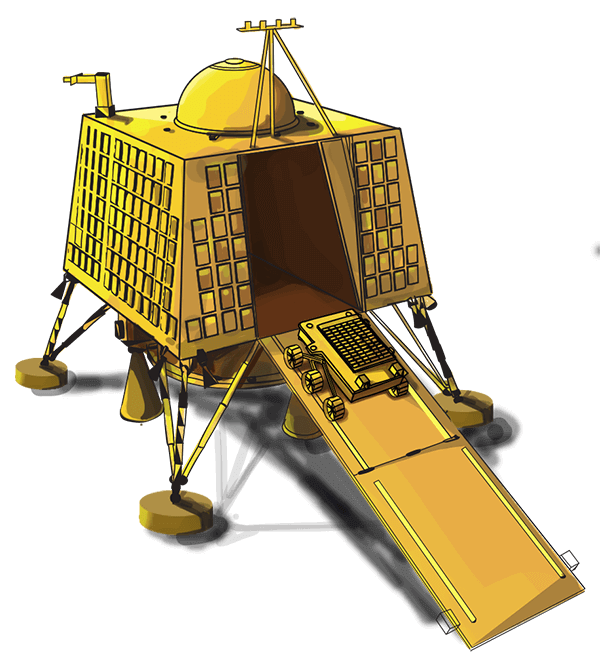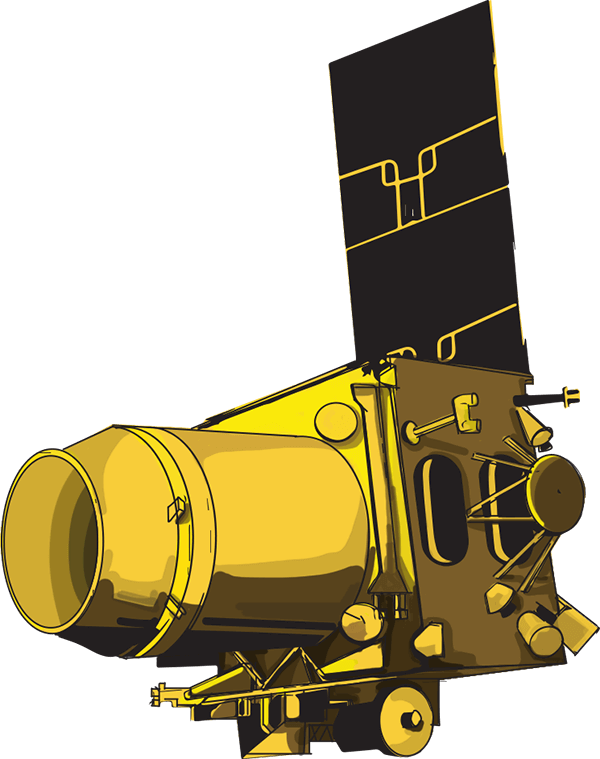How did Chandrayaan-3 travel to the Moon?
What makes Chandrayaan-3 different from Chandrayaan-2?
How did Chandrayaan-3 travel to the Moon?
What makes Chandrayaan-3 different from Chandrayaan-2?
The Chandrayaan-3, consisting of a propulsion module, a lander and a rover, orbited the Earth in an elliptical orbit. Using the fuel in the propulsion module, the spacecraft's orbit was raised in 5 stages (July 5, 17, 18, 20 and 25). At its closest point (perigee), the orbit was 170 km away from the Earth and and 36,500 km at its farthest point (apogee). The spacecraft moved into lunar orbit on August 1. It entered the Moon's gravitational field on August 5. There, starting with an ellipse, the diameter was reduced and the orbit lowered in four stages (August 6, 9, 14 and 16). The spacecraft switched over to a circular orbit when it reached 100 km above the lunar surface.
The lander, rover and the propulsion module reached the lunar orbit together. The lander and the rover got separated from the propulsion module 100 km from the lunar surface. The module has started circling the Moon, while the lander and rover will land on the surface. Total weight: 3,900 kg (equals the average weight of a male Asian elephant)



The largest and heaviest LVM3 rocket was used to launch Chandrayaan-3 into the geo transfer orbit. It used India's largest cryogenic engine C20.

On August 17, the lander separated from the propulsion module. From August 18, the lander was moved into a closer orbit to the Moon.


Unlike on Earth, as the Moon's gravity changes, the lander will use two of its thrusters to navigate down to the surface. If needed, it can also use four thrusters. The lander will reorient itself to 90 degrees for safe landing on Moon's surface. It will try to bring down the lander slowly at a speed of 2 metres per second. ISRO has strengthened lander legs so that it does not crash even at a speed of 3 meters/sec. Sensors will check the Moon's gravity to control speed. The landing spot will be scanned accurately. If everything goes well, next stage in landing.


If the soft landing is successful, then it is the rover's turn. During the landing, lunar dust willl blow up. once this is settled, the six-wheeled rover use ramps to reach lunar surface. Then begins the hours of testing. The life of the rover is one lunar day or 14 days. The propulsion module, lander and rover have seven payloads, or testing instruments. The data collected by the rover, named Pragyan, will not be sent directly to Earth. The signal will go from the rover to the lander and from there to the Mission Operations Complex in Bengaluru, the control centre on Earth. ISRO's telemetry, tracking and command network is in charge there. If Chandrayaan-3 makes a soft landing at the Moon's South Pole, India will become the first country to achieve the feat.

